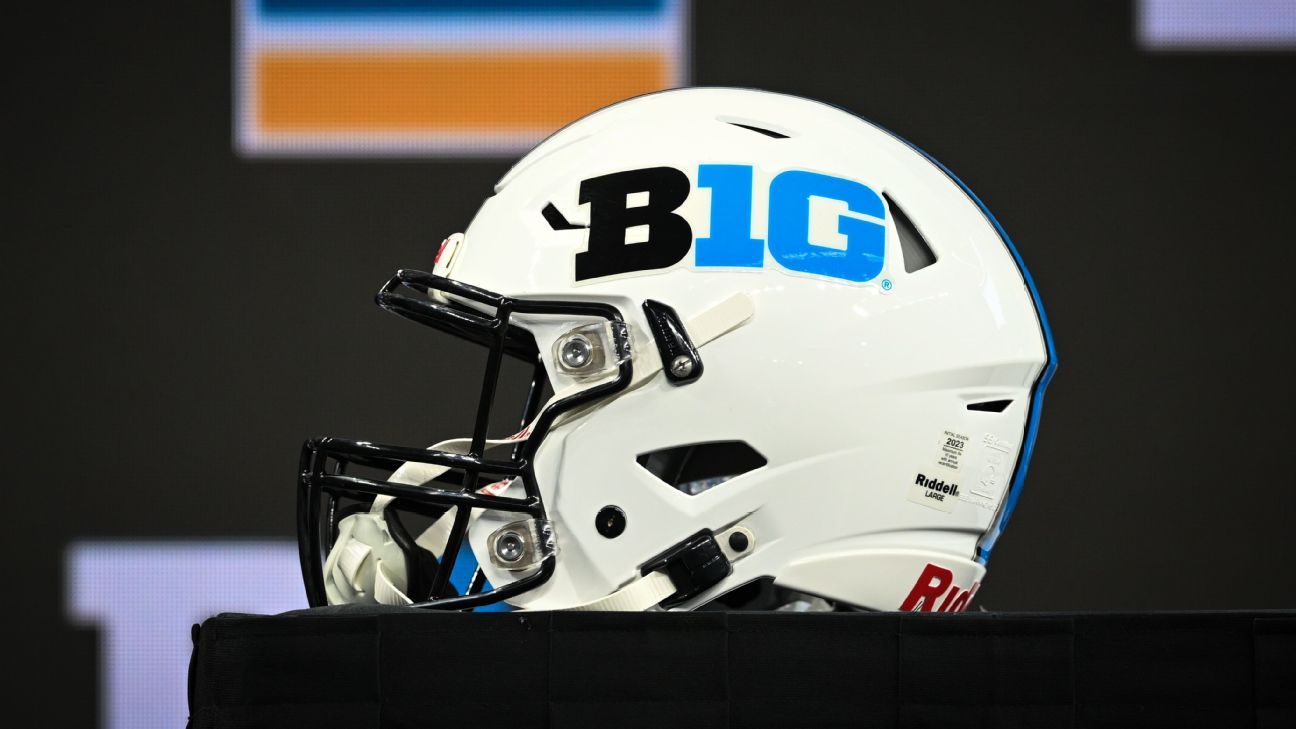After adding Oregon and Washington to its ranks, the Big Ten on Thursday announced its newest version of its future football schedules for the 2024 to 2028 seasons.
The conference had released a schedule format in June, but with Oregon and Washington joining its ranks, another release was necessary.
This most recent schedule will be formatted with what the conference is calling the “Flex Protect XVII” model, which will feature a combination of protected opponents and rotating opponents for the universities.
“We added two more [teams], but that changes everything. We got to go back to the drawing board and do this rotation again,” Big Ten commissioner Tony Petitti said on a conference call. “We’re staying with a lot of the principles that were in place when we did the original announcement back with USC and UCLA being integrated, the core concepts, competitive balance, connecting the whole conference. Trying to be mindful of travel, all those things are still in place here, protecting the traditional rivalries, all of those things are in this process.”
There are 12 guaranteed protected matchups within the new format that will be played annually, including Illinois–Northwestern, Illinois-Purdue, Indiana-Purdue, Iowa–Minnesota, Iowa-Nebraska, Iowa-Wisconsin, Maryland–Rutgers, Michigan–Michigan State, Michigan-Ohio State, Minnesota-Wisconsin, Oregon-Washington and UCLA-USC.
🏈 The #B1G Announces 𝟮𝟬𝟮𝟰 Future Football Schedule Format
➕ https://t.co/hfPUYhaiqX pic.twitter.com/JZqcS2Fn0Q
— Big Ten Football (@B1Gfootball) October 5, 2023
🏈 The #B1G Announces 𝟮𝟬𝟮𝟱 Future Football Schedule Format
➕ https://t.co/hfPUYhaiqX pic.twitter.com/ycxNCdE4dY
— Big Ten Football (@B1Gfootball) October 5, 2023
🏈 The #B1G Announces 𝟮𝟬𝟮𝟲 Future Football Schedule Format
➕ https://t.co/hfPUYhaiqX pic.twitter.com/9RMgmMovhI
— Big Ten Football (@B1Gfootball) October 5, 2023
🏈 The #B1G Announces 𝟮𝟬𝟮𝟳 Future Football Schedule Format
➕ https://t.co/hfPUYhaiqX pic.twitter.com/44f4Es4ay6
— Big Ten Football (@B1Gfootball) October 5, 2023
🏈 The #B1G Announces 𝟮𝟬𝟮𝟴 Future Football Schedule Format
➕ https://t.co/hfPUYhaiqX pic.twitter.com/nQGBeXpwxH
— Big Ten Football (@B1Gfootball) October 5, 2023
Distance and travel has been a big part of the process for Petitti and Big Ten chief operating officer Kerry Kenny, as adding four West Coast teams created logistics questions that needed to be balanced for student athletes and budgets. The conference worked with athletic directors on finding that balance and ensuring that things were working in the most efficient way for everyone involved.
“There’s an overall narrative that’s being painted that every competition that’s going to occur in the Big Ten is going to be a midweek game involving a team from Eugene against a team from Piscataway. That’s not really what we’re looking at here,” Kenny said. “We’ve taken a really thoughtful approach, not just to football but sport by sport, that’s going to be impacted by adding these four schools. And what is the most efficient way to create schedules, create opponent rotations in formats that try to minimize, to the extent possible, that time away from campus.”
Kenny said mental and physical well-being of the student athletes was at the forefront of the sequencing and things like making sure that if a team is playing an away game two time zones over, it won’t also be playing a noon away game at a Central time zone school the next week. The conference took into consideration the weekly ebbs and flows of a season as well as bye weeks and Friday night games that might impact travel.
In the 2024 season, the new teams will feature several away games, with Oregon traveling to Michigan, Purdue, Wisconsin and UCLA. The Trojans will play at Maryland, Michigan, Minnesota, UCLA and Washington. UCLA will go to Nebraska, Penn State, Rutgers and Washington. The Huskies will travel to Indiana, Iowa, Penn State, Rutgers and Oregon.
Each team will play nine intraconference games per season, and teams will play rotating opponents no more than three times in a five-year period.
The 2024 season will be the first with no divisions and will feature 18 teams across the conference. Because there will no longer be divisions, the Big Ten championship game will feature the top two teams in the overall conference standings at the end of the regular season.
